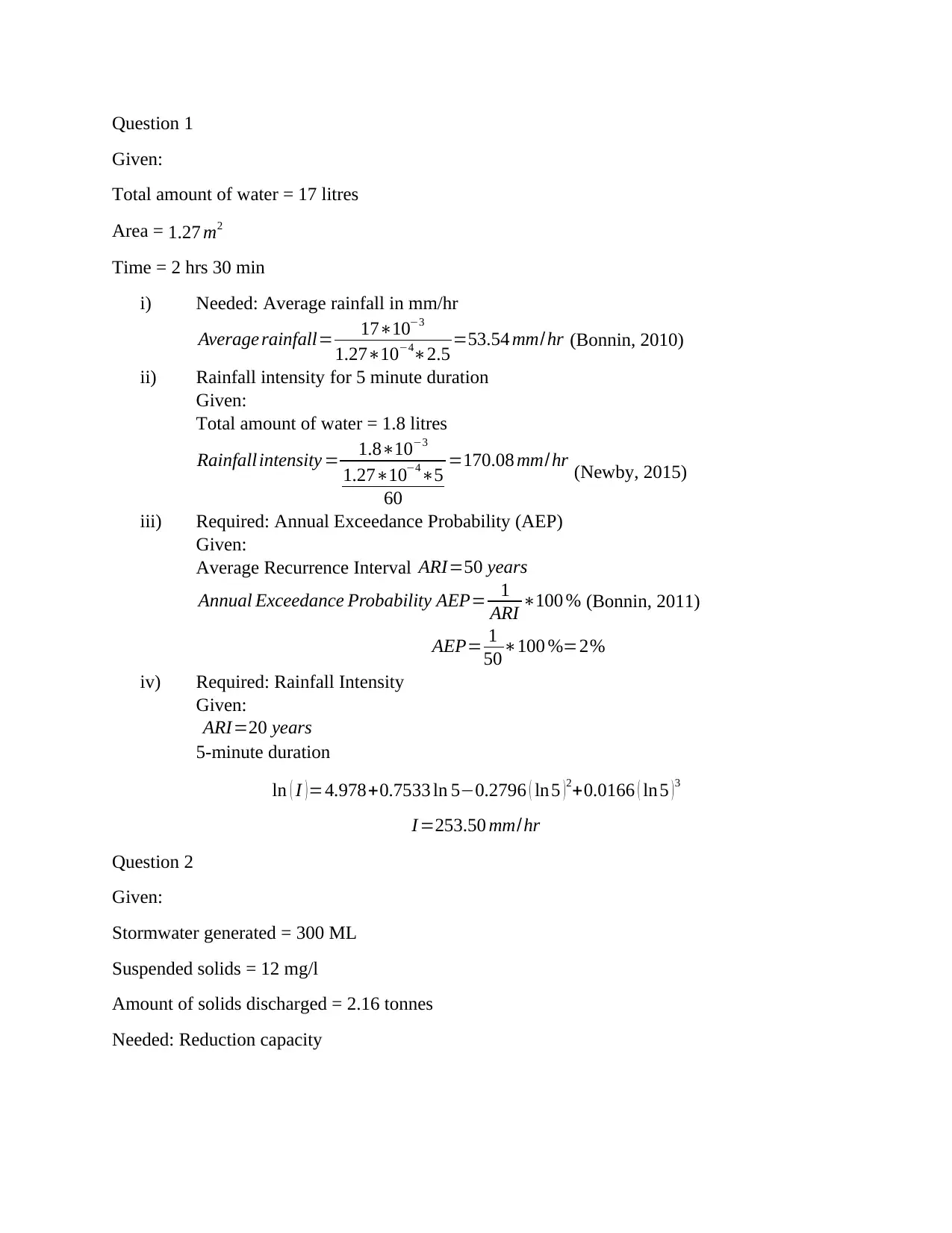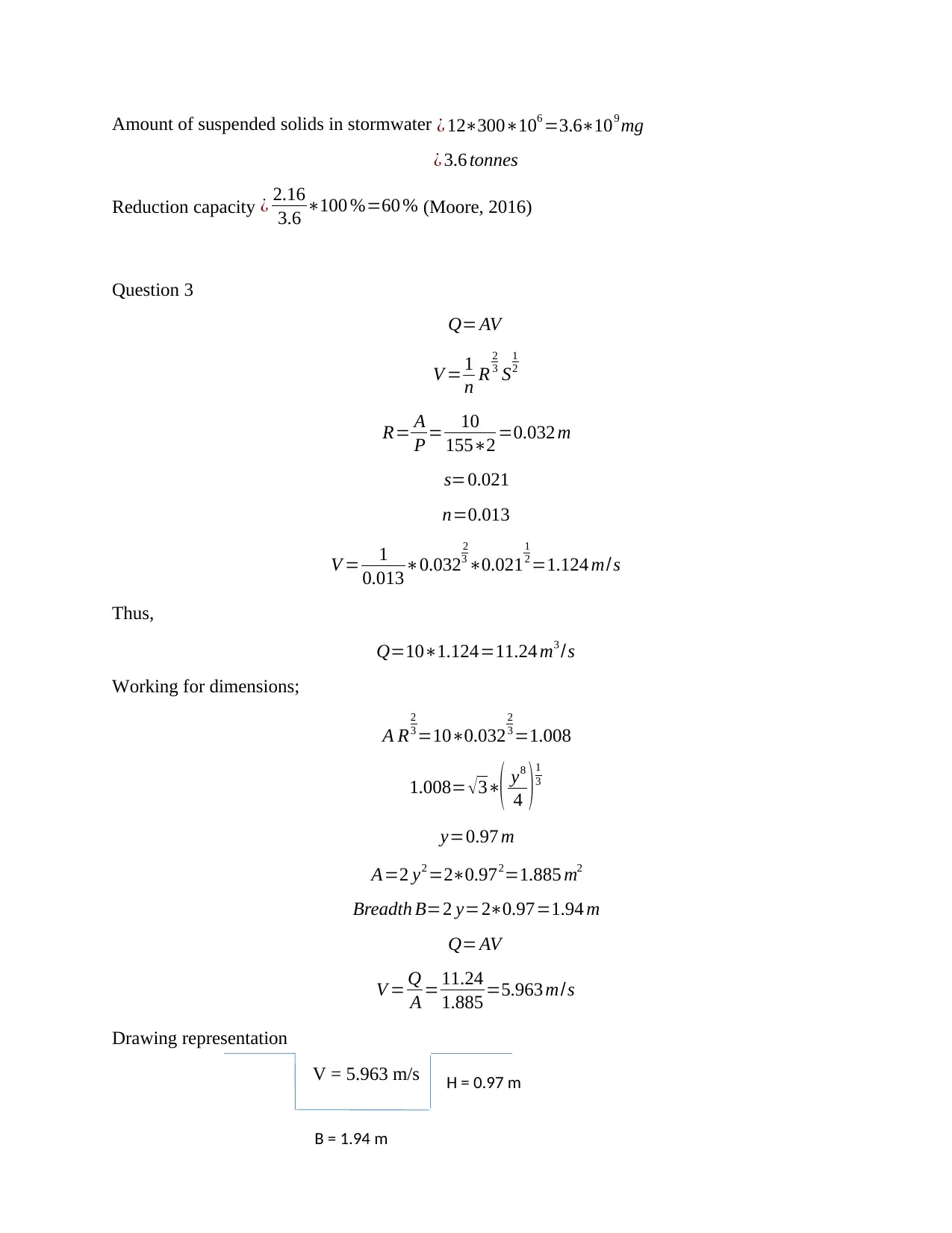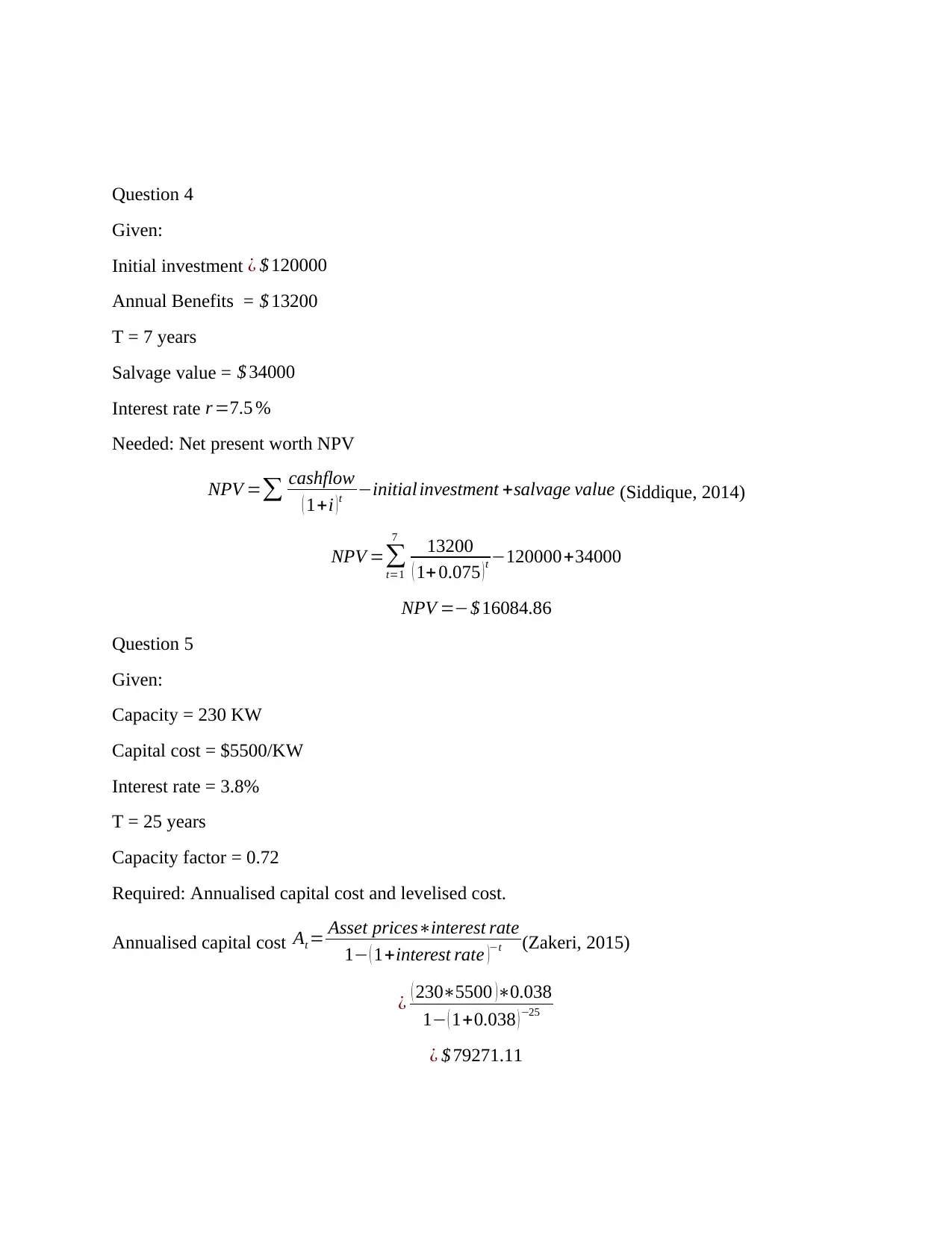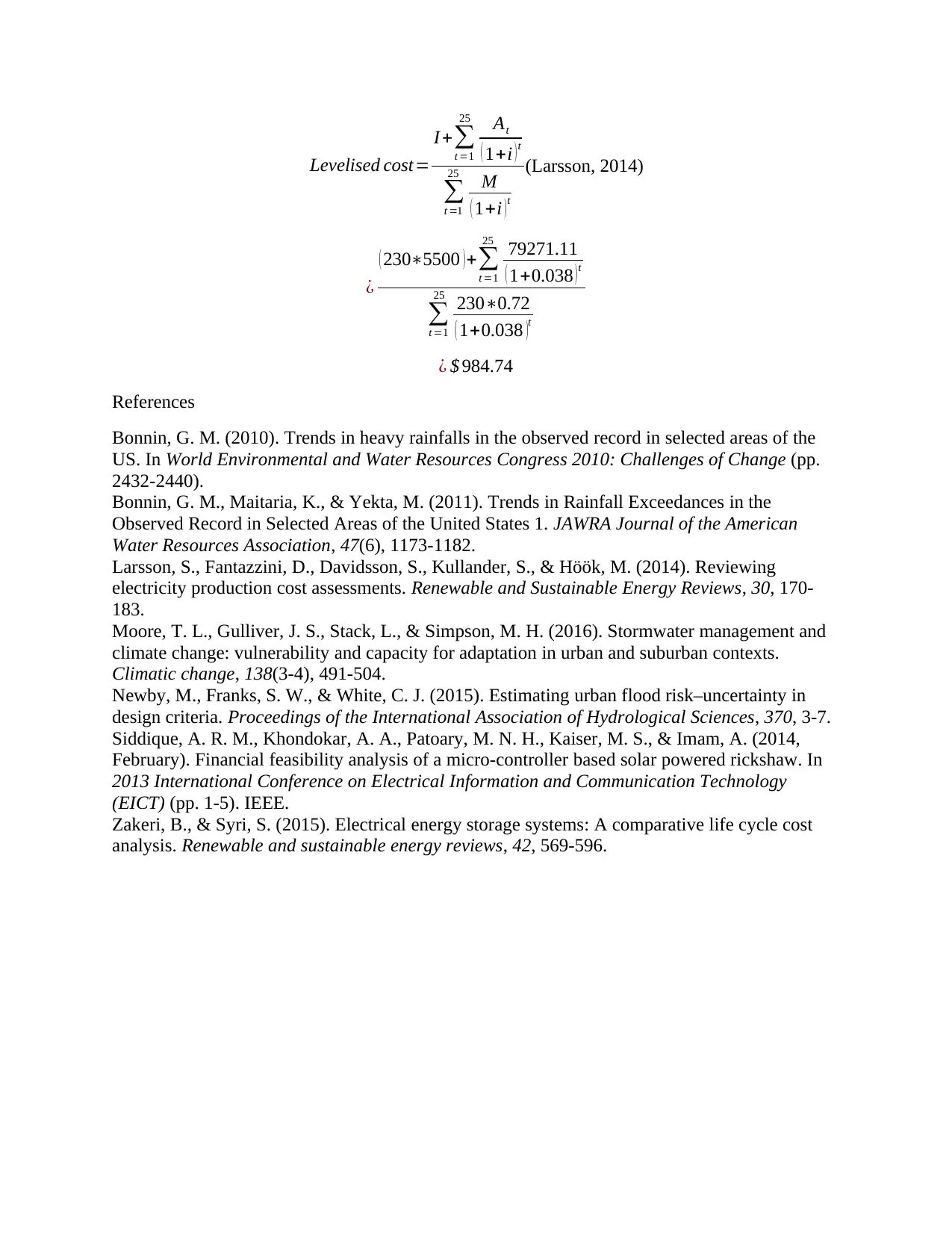300798 Tutorial Assignment 2: Sustainability and Risk Engineering
VerifiedAdded on 2022/10/17
|4
|543
|33
Homework Assignment
AI Summary
This document presents a detailed solution to a Sustainability and Risk Engineering tutorial assignment. The assignment covers several key areas, including calculating average rainfall intensity, determining rainfall intensity for a given duration and recurrence interval, and calculating annual exceedance probability. It also involves stormwater management, specifically calculating the reduction capacity of a treatment device for suspended solids in stormwater. Furthermore, the assignment includes a channel design problem requiring the determination of dimensions for a rectangular channel. The solution provides step-by-step calculations, formulas, and references to support the answers, making it a comprehensive resource for students studying environmental engineering and related fields. The assignment uses various parameters such as total water accumulation, area, time, recurrence intervals, and suspended solids to arrive at the solutions for each question. The solution provides a clear and concise approach to tackling each problem within the assignment brief.
1 out of 4





![[object Object]](/_next/static/media/star-bottom.7253800d.svg)